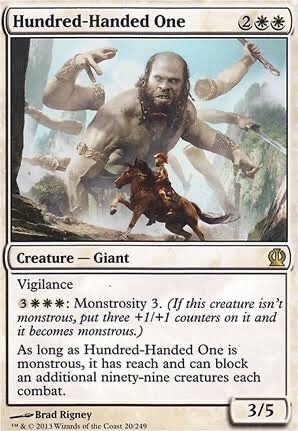The Hecatoncheires and Cyclopes are extraordinary gigantic beings. They were born from the union of Gaia and Ouranos. Gaia is the Earth goddess, and Ouranus was a Sky deity this means that these giants and their Titan siblings were born from the Union of Heaven and Earth. However, Uranus saw their births as mistakes. In his opinion, there three Hecatoncheires and the three cyclopes were ugly and brutish and Uranus had them imprisoned. Little did he know that these six figures would help shape the stage for an Olympic future.
The Birth of Giants:
The three Hecatoncheires were Cottus, Gyges, and Briareus. These creatures were characterized by their immense strength and their ability to rip apart mountains and fling them at their enemies. They were easy to identify. Each had a hundred hands and fifty heads. Sometimes they are described as having a hundred heads, but you get the idea, they were a colossal conglomerate of limbs and ferocity and the strength to back it up.
Gaia also birthed the Cyclopes: Brontes, Steropes, and Arges. These giants were one-eyed and were exceptionally known for their craftsmanship and skills, often associated with forging weapons for the gods most notably the trident wielded by Poseidon, the bident used by Hades and of course the lightning bolt wielded by Zeus.
The Pit:
Ouranus, fearing the power and potential rebellion of his offspring, decided to imprison the Hecatoncheires within the earth, deep within Tartarus. Tartarus, also known as the Pit, is a primordial abyss older than the Sky which lies beneath the underworld. The Cyclopes, too, faced the same fate and were banished to the Pit.
Cronus did not end there and began imprisoning the next set of children, the Titans. Gaia’s wrath was ignited and she plotted with her Titan offspring, led by youngest, Cronus, to overthrow Ouranus and end his tyrannical rule.

Liberation:
The Titans rose against Ouranus. With the aid of a sickle forged by Gaia, Cronus castrated his father, and overthrew him.
However, as the Titans assumed power over the world, marking a new age, Cronus made a terrible decision. King Cronus, liberated his Titan siblings, but kept the Cyclopes and Hundred-Handed giants in Tartarus. They were ignored and left to rot.
As a new age dawned a new rival emerged to fight against Cronus, Zeus. A child of Cronus, Zeus was raised in captivity away from the mad Titan who had swallowed his older siblings hole. When the time came to strike Zeus gave the Titan a mixture of wine and mustard which made Cronus puke out the other five Olympians and war quickly ensued. In an attempt to balance the scale of the war against the Titans, Zeus traveled to the underworld and released the Cyclops and the Hecatoncheires. Grateful for their release, they allied themselves with the Olympians, becoming instrumental in the subsequent Titanomachy—the epic clash between the Titans and the Olympians for dominion over the cosmos.
This lead to the Olympian victory.
Impact:
The tales of the Hecatoncheires and Cyclopes highlight the cyclical nature of creation and destruction in Greek mythology. The imprisonment and subsequent liberation of these formidable beings symbolize the eternal struggle between order and chaos.
Moreover, the Cyclopes’ association with forging thunder and lightning played a crucial role in shaping the divine weaponry used by the gods, most notably Zeus’s thunderbolt. Their craftsmanship and contributions to divine weaponry underscore the interconnectedness of the divine and mortal realms.
Fate:
While much of their role in mythology is diminished and they took a back seat. There is the case of Apollo.
The son of Apollo, Asclepius, had successfully resurrected someone from the dead. Zeus, fearful that this trick may be taught to other mortals killed Asclepius with his thunderbolt.
Apollo then proceeded to kill the cyclopes that forged these thunderbolt and for that Zeus punished the sky god. Apollo was then condemned to the human realm and to live out one year as a mortal under the tutelage of a king
Conclusion
The stories of the Hecatoncheires and Cyclopes, born of Gaia and cast into the depths by Ouranus, are emblematic of the conflicts that defined the Greek mythological landscape.
From their primordial births to their eventual liberation and pivotal roles in shaping the destiny of the cosmos, these beings embody the profound themes of creation, destruction, rebellion, and the cyclical nature of the universe.